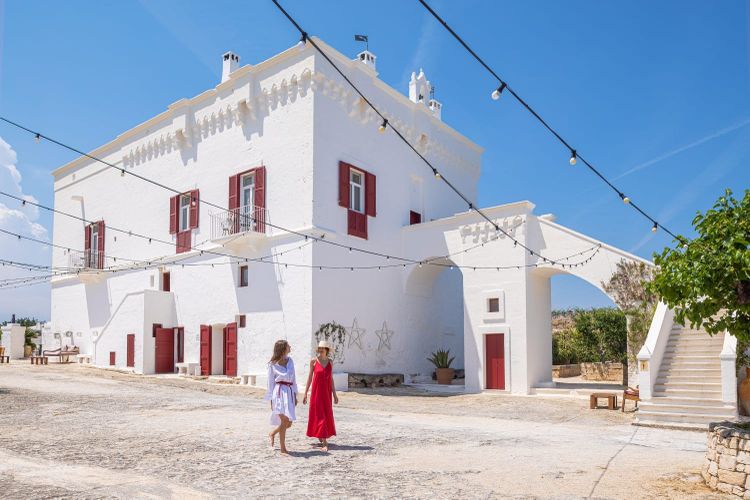The Centuries-Old Abandoned Farmhouses of Puglia Are Having a Renaissance Moment
Supporting sustainability and local economies, these out-of-the-way structures known as masserie are offering a new type of rustic luxury
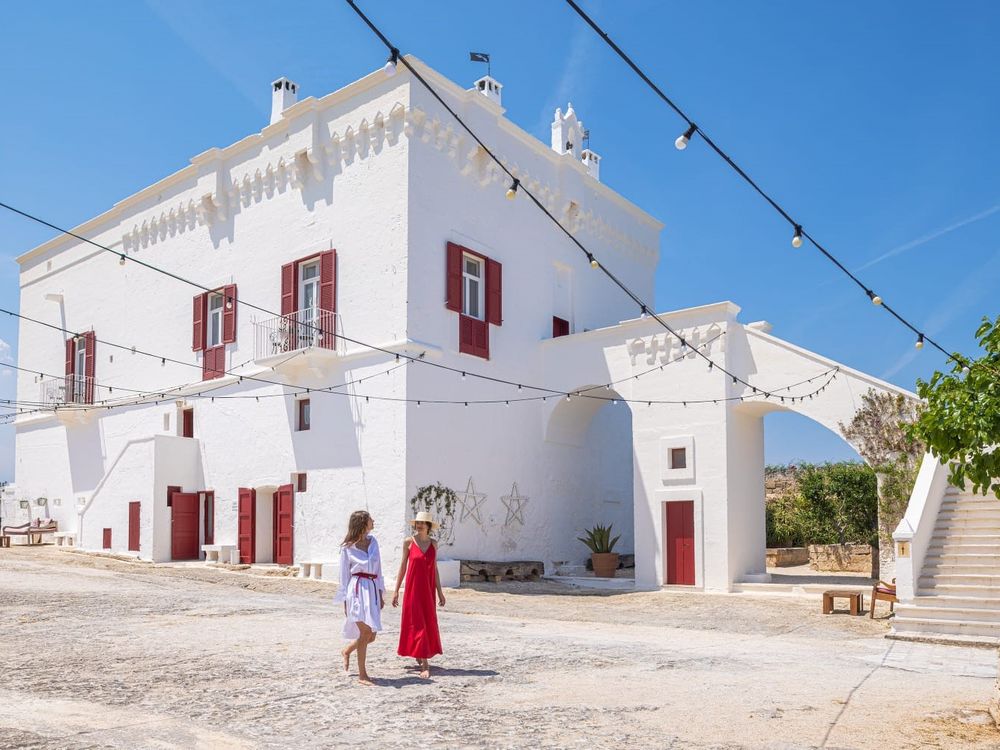
Deep in the countryside of Puglia, away from the booming and super-hot touristic cities like Alberobello, masserie have been sitting abandoned for centuries. Now, after a long period of decay, these 16th to 18th century farmhouses are having a renaissance moment as entrepreneurs remake the long-lost gems into intimate retreats and luxury hotels.
Built by wealthy landowners who produced olive oil, wine and other agricultural goods, these historic homesteads, fortified with thick white stone walls once meant to defend from Ottomans, pirates and other bandits, offer a unique opportunity for experience-based, sustainable tourism.
In a place where cultural traditions and healthy Mediterranean food have centuries-long ties, along with the beautiful beachside landscapes meant for quiet contemplation, it’s no surprise that locals have started investing in all Puglia has to offer.
The masserie revival began at the turn of the 21st century, when a new generation started understanding the potential to revive these crumbling historic structures. Masseria Torre Coccaro was one of the first to lead the way when owner Vittorio Muolo’s family turned an abandoned masseria into a sustainable luxury hotel, revitalizing the local economy and tourism industry. Hundreds more have followed.
Key takeaways: Defining characteristics of masserie
- These farmhouses in Puglia were built from the 16th to 18th centuries, evolving from watchtowers to villages that housed farmers who raised animals, grew crops and produced goods like wine and olive oil.
- Constructed as a defense against Ottomans, pirates and other bandits, masserie typically have thick white stone walls, narrow entryways and small windows.
“We’re going back to our roots,” says Sonia Lisa Pereira, a historian and PhD candidate at the University of Rome who is studying the conservation of ancient Italian architecture. “People started researching their history. We want to conserve and restore these places.”
Daily life at masserie in the 16th to 18th centuries
When I traveled to the heel of Italy this May to attend an intimate yoga retreat, I stayed at Masseria Specula, one of the newly renovated masserie in the quiet Manduria region. About a two-hour drive from the Bari airport, I didn’t see many tourists—or many people at all, for that matter.
The first evening, we practiced sunset yoga on the shores of the Ionian Sea, a ten-minute walk from the masseria, before returning to a homemade dinner of fresh pasta made by local nonne. For many of these women, all of whom are over 50 years old, this is their first job outside their home, and they take it very seriously. (Don’t even think about leaving so much as a spoonful of risotto on your plate.)
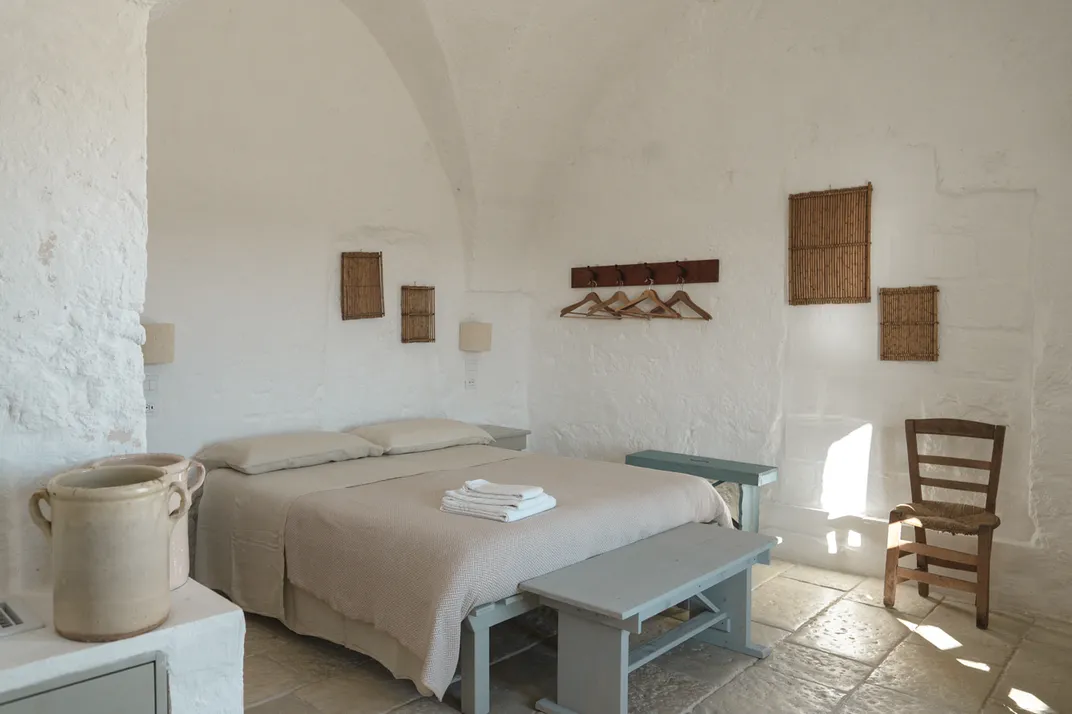
As I headed back to my accommodations, a bright, rustic room with antique furnishings adorned with a large fireplace, past the small courtyards and olive grove, I began to wonder what life was like for people who lived on these fortified farms hundreds of years ago.
Many have been in the same family for centuries and originally served as watchtowers to protect against invaders. “Often, the very first structure of the masseria was a tower. Then you need protection from the rain, from people, and over time you have a small farm,” says Pereira.
Through the centuries, the watchtowers evolved into self-sufficient villages that grew crops, raised sheep and housed farmers. “Each masseria along with the land it owned was a small little town in itself,” Pereira says. “The landlords decided what they wanted to enforce, and then everybody had to follow those rules.”
Defense was a priority, especially against the Ottomans, so the farms were fortified like castles and enclosed with high walls and narrow entryways. An observant eye will notice that many of the windows within the masserie are purposely small. Underground shelters were also built in natural caves. While the wealthy landowners had apartments in the masserie, they often owned multiple farms and would travel between them. The defensive structure was meant to keep both the landowners and the farmers safe.
During the height of the masserie, agriculture was the main industry in Puglia and a huge source of employment. However, in the late 17th and early 18th centuries, jobs slowly began to move from the countryside to the city. With the Industrial Revolution, masserie began to struggle to keep farmers employed, and soon they lost their appeal. Far from the central city of Bari, and challenging to maintain, even those that remained farms were no longer independent and thriving communities. Some became vacation houses for wealthy landowners with big families, while others started a slow process of deterioration, Pereira explains.
Breathing new life into Puglia’s farmhouses
Carlo Tommasino, owner of Masseria Specula, described the epic reinvention of the once-crumbling farmhouse to me over a lovingly prepared breakfast of freshly made cake, fruit and jam one early morning. Growing up in Manduria during the 1990s and early aughts, he and his friends spent summer days exploring the rolling hills and ancient olive groves of Puglia. “What was really cool as a child was to explore the abandoned masserie, playing hide-and-go-seek,” he says.
The previous owner of the 5,000-square-foot farmhouse, with nearly 50 acres of surrounding farmland, was the father of one of Tommasino’s childhood friends. It seemed like the perfect opportunity to reclaim an important part of his heritage and Pugliese history. “Many of these masserie are abandoned and are getting destroyed over time. In a couple more centuries, if they don’t get renovated, they will probably not exist anymore,” he says. “It’s quite a loss of heritage.”
When Tommasino purchased Masseria Specula in 2022, it was crumbling. He knew he would have to do a complete nuts-to-bolts renovation, a huge undertaking. After over a year of construction, the masseria opened in 2023 with six guest rooms. (He’s in the planning stages of expanding to ten rooms total.) To differentiate his masseria from others, Tommasino mostly focuses on hosting small retreats like the one I attended. The luxury of Masseria Specula is its natural aesthetic—the deep sunsets; the quiet, contemplative olive garden; and the tucked-away corner for nightly bonfires. The peak season to enjoy these amenities is from March to December.
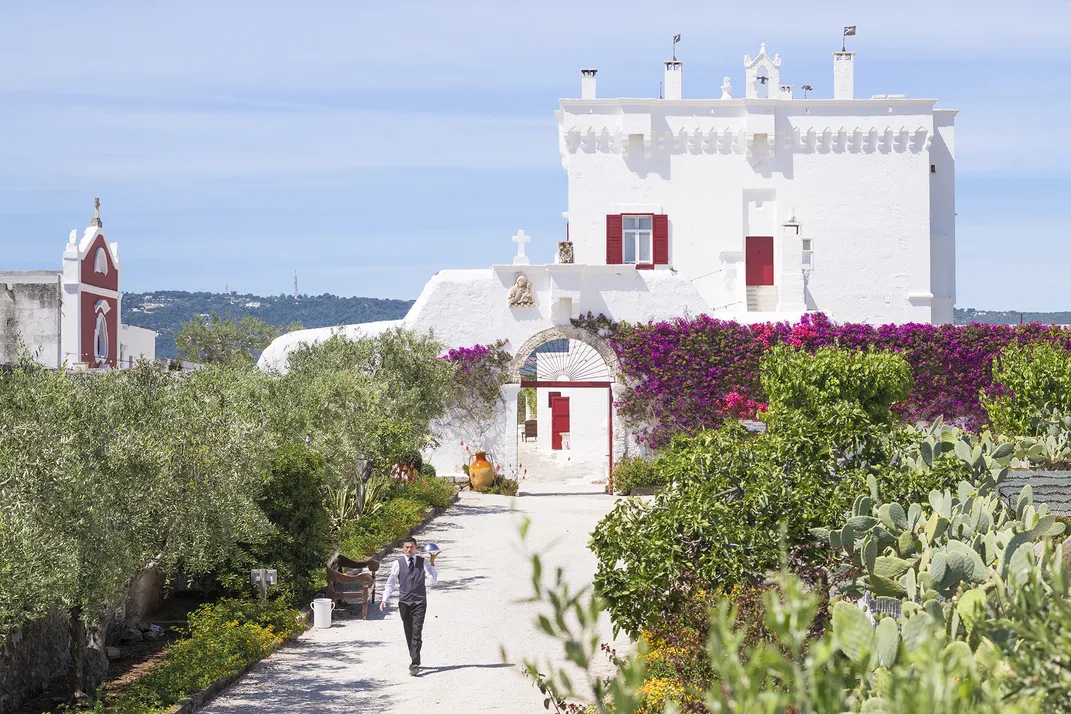
On the other side of Italy’s heel, Muolo’s father purchased Masseria Torre Coccaro from a family friend. The 37-room masseria, which sits atop a bucolic hillside facing the Adriatic Sea, was once owned by the Marquis Palmieri of Monopoli, a 16th-century noble landowner who is best remembered for participating in the Crusades to the Holy Land. “They owned the land from my masseria all the way to Monopoli,” Muolo says. When the masseria was no longer profitable, the Marquis left it to the caretakers, who continued to pass it down through generations. Written records of masserie are scarce, so new owners rely on oral history and rare historical documentation.
With a focus on staying true to their cultural heritage, Muolo and his family continue to grow fruits and vegetables, and produce olive oil from trees that are more than 1,000 years old, all of which they use at the hotel. The masseria serves traditional Pugliese food, including fresh fish and pizza, at multiple on-site restaurants, allowing for both casual beachside dining and white tablecloth service.
With sustainability and preservation at the forefront of their masserie, Tommasino and Muolo used local artisans and architects to help them overcome difficult renovation obstacles, including a ruling that states you can’t modify the external aesthetics of the farmhouses. Their overarching goal was to maintain the authenticity of their masserie and to showcase their unique histories, while providing luxury accommodations in a way that supports their local communities.
Tommasino told me that one of the guest rooms had been a pantry, with a small alcove that had a fireplace to make goat cheese. Because this area was going to become a bathroom, they had some tough decisions to make. Ultimately, they built a bathtub into the fireplace instead of removing it.
Because Masseria Specula, which dates back to 1611, had been abandoned for over 70 years, it was difficult to find someone who could discuss the place’s history. Luckily, Tommasino tracked down a 90-year-old woman who once farmed the land. She explained where many of the rooms had been and what their purpose was. One of the more unusual-looking alcoves with a tiny entrance completely stumped Tommasino, until the farmer explained that this was where they would take one sheep at a time for milking.
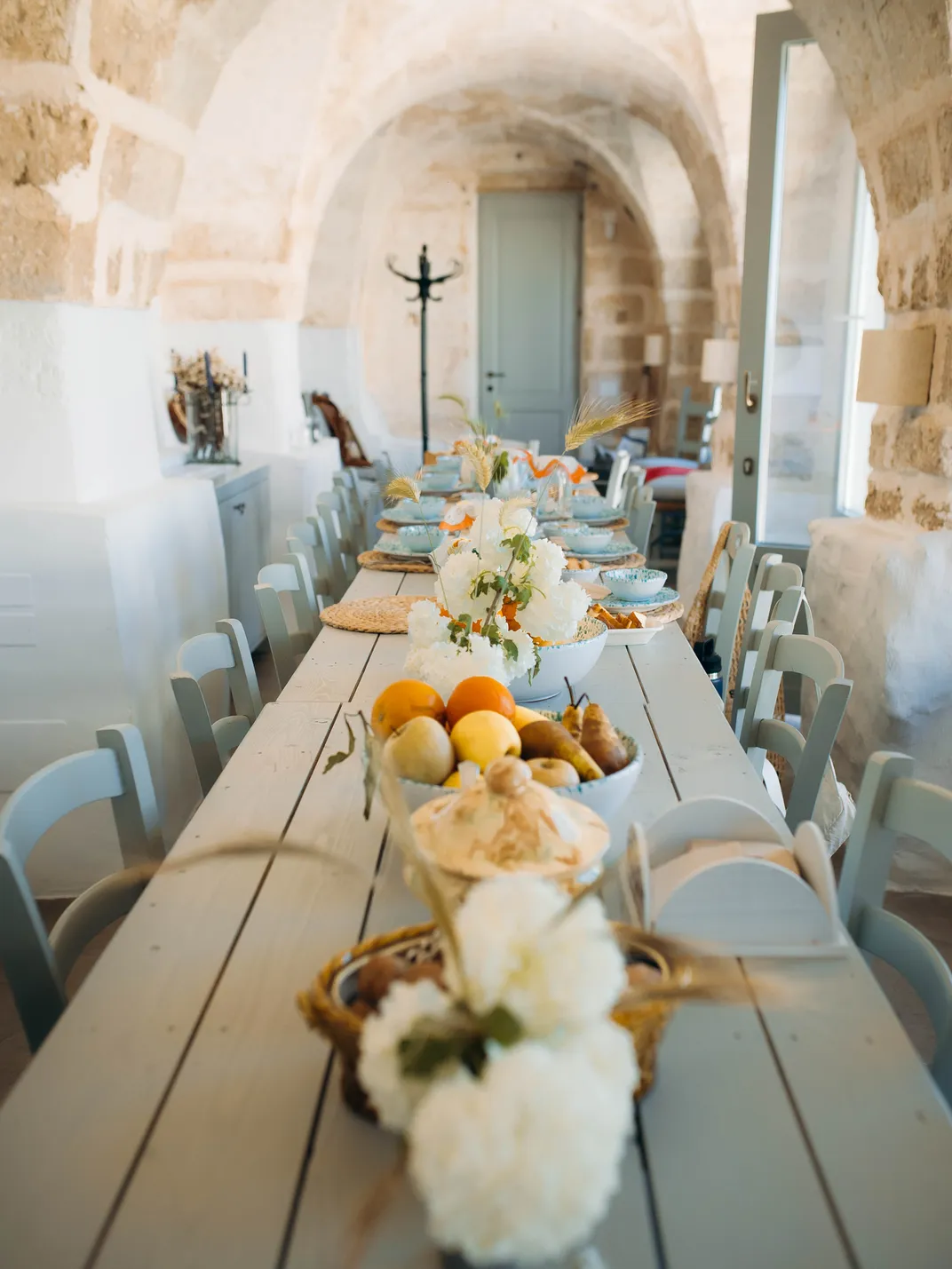
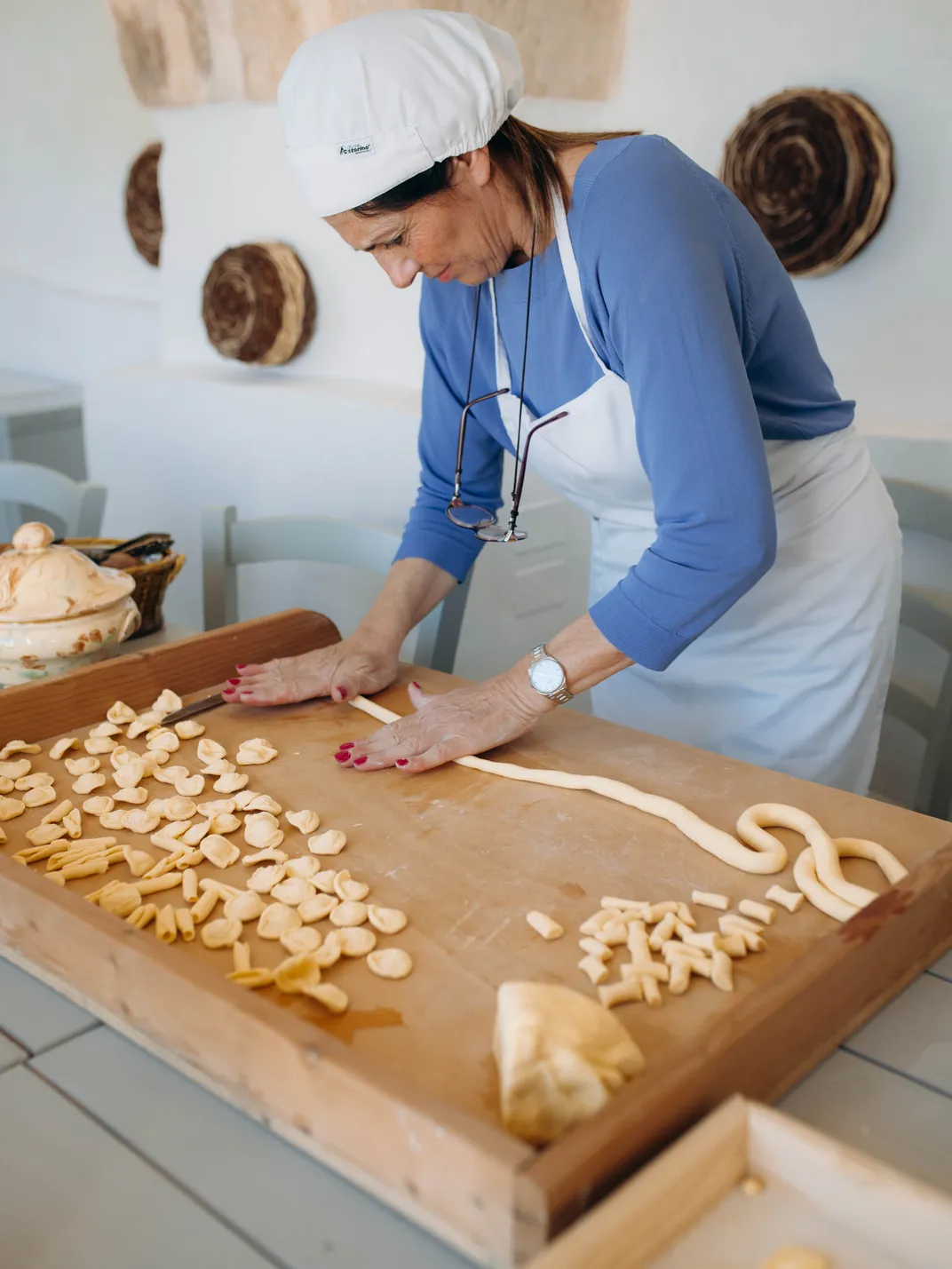
Parts of the masseria were almost beyond repair. One section had completely collapsed, and Tommasino found a 70-year-old craftsman who knew how to rebuild an arched ceiling. “For centuries they had been built that way, and then in the 1950s and ’60s, they began building flat ceilings with beams,” he says. Another puzzling question was what to do with the long, narrow goat stable. It flanks one entire side of the masseria, but it was unusable as a guestroom. Tommasino ultimately decided to put the dining room here. He sectioned off one side into the kitchen where the nonne cook their homemade vegetarian meals, and then he had a long custom-made dining table crafted to fit the space. It’s a tight squeeze, but it feels cozy and authentic.
Muolo faced similar challenges with Masseria Torre Coccaro, which dates back to the early 1500s. “We wanted to convey the history and the culture of Puglia to the people who visit,” he explains. That’s why they only used local stone for the floors. “It’s the same stone that was used in the quarry a long time ago,” he says.
To maintain the integrity of the white limestone walls, both owners utilized similar methods. They treated the walls with a mix of lime known as culture. Then, they painted it with a special white paint to let the stone breathe. As an aside, Periera says, “If you ever want to know how old a masseria is, just look at the amount of cement between the bricks. The lesser the cement, the older the structure, the more cement or mortar in between the bricks, the newer the structure.”
Muolo’s family had another conundrum to consider. What to do with the cave on the property? “There are a lot of caves in Puglia where pilgrims, often Benedictine monks on their way to Jerusalem, used to hide from Muslim pirates raiding south Italy in search of gold,” he says. Some of these caves have fireplaces, and some were consecrated and used as churches, known as rupestre. “If the masseria was close to a mountain or a hill, they would cut into the bedrock itself and then create a chapel inside,” says Pereira. Muolo’s cave once housed an olive mill. After much thought, he decided to repurpose the cave into an underground spa experience, with an indoor pool, Turkish baths, a sauna and lavish cosmetic treatments. Muolo also has a separate church on the property, dating back to at least the 1700s, that his family still uses today for holidays and other special occasions.
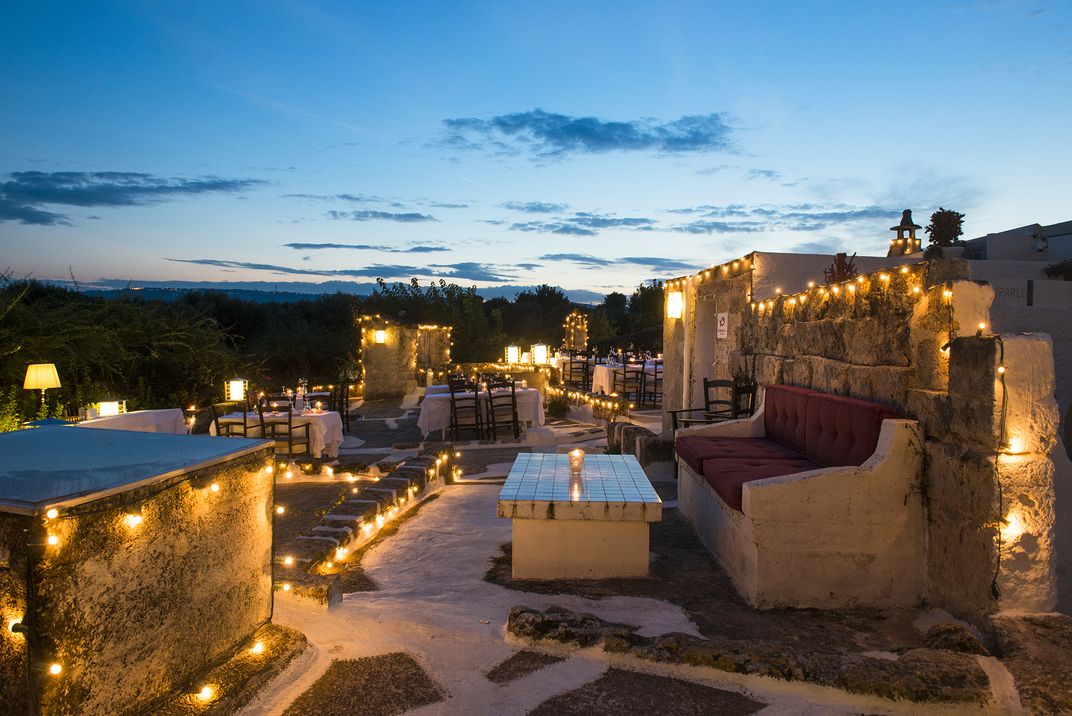
“If you look at the masserie in all little towns in Puglia, each one is really different,” says Pereira. Some were vast estates, while others were more compact. The amount of fortification also varied based on the threat of attack in different regions of Puglia. Each masseria has distinct features that sets it apart from the others. Masseria Bambarone has incorporated a sculpture garden into its landscape. Biomasseria Santa Lucia, situated next to an archaeological site of Basilian monks, maintains the original Italian frescoes and symbols on the tower walls.
Sustainability is a core mission
For many, the decision to stay at a masseria is about supporting sustainable tourism and contributing to local economies. At Masseria Specula, the nonne source their food from farmers in neighboring fields. The retreat uses solar power for the majority of its electricity, and since the property isn’t connected to an aqueduct, it collects rainwater from plants and then cycles it through a water purification system to cut down on water delivery. Employees also raise bees for honey consumption and to enhance pollination in the fields. “The variety of flowers we have is crazy,” says Tommasino. “The field has never been treated chemically because it was always used for animal grazing, never for crops.” In the future, he plans to bring goats back to the masseria for natural weed control. Similarly, Masseria Torre Coccaro focuses on dry agriculture, using as little water as possible. “It’s actually better for the plant. It’s wilder, so the flavor is strong,” says Muolo.
Another perk is that both masserie focus on small, curated experiences that tourists would be hard-pressed to find in bigger cities like Rome or Bari—and that give back to the locals. Torre Coccaro has established an art foundation that invites artists from around the world to collaborate with artisans in the community. The lodging also hires local guides for other activities. “We arrange sunrise fishing with a local guy, or visits to a cove or a castle on the sea,” says Muolo.
On the last evening of our retreat at Masseria Specula, we gathered on the rooftop, where the views stretched over endless green fields and across the turquoise the sea, for one last incredible sunset yoga session. As I stretched and breathed, I experienced a fleeting sense of peace and joy that I wanted to bottle up and take home.
With their quiet stillness, fresh air and overall sense of harmony, Puglia’s masserie, far from the madding crowd, provide a reset from the frantic pace of modern living.
Planning Your Next Trip?
Explore great travel deals
A Note to our Readers Smithsonian magazine participates in affiliate link advertising programs. If you purchase an item through these links, we receive a commission.
